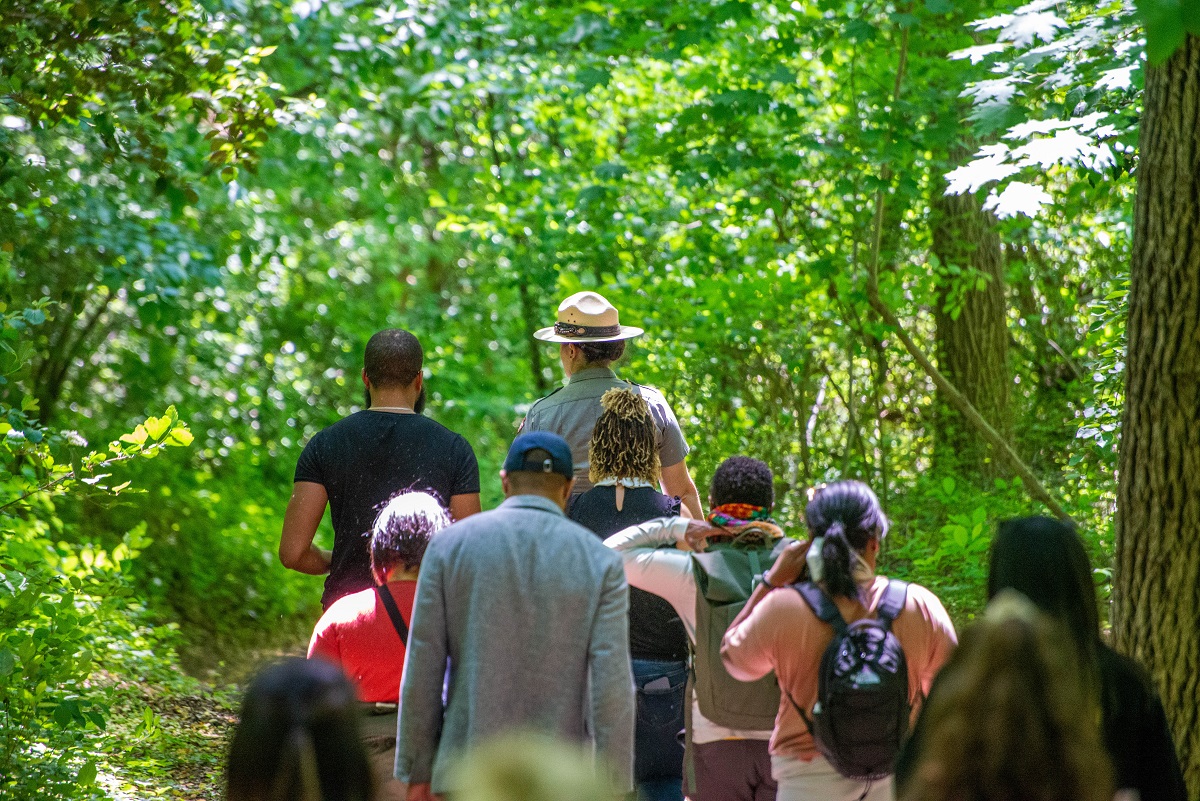As we enter the third year of the COVID-19 pandemic, children and youth continue to face upheavals in their family, social, and educational lives. Their daily routines are disrupted by exposure alerts and quarantines, they may be unable to see friends and family, and the back-and-forth of virtual and in-person schooling is taking a toll. It’s unclear when, if ever, we’ll be able to get back to normal.
Cut off from networks of support and stability, our youth are experiencing almost unprecedented exposure to trauma and loneliness. According to mental health professionals, the rates of depression and anxiety observed in young people are soaring. In December 2021, Surgeon-General Vivek Murthy declared that the United States had entered a “youth mental health crisis.”
It will take time to address the effects of this crisis, but there is one effective measure we can take right now: get kids outdoors. We know that exposure to nature can help relieve depression and anxiety, and even help heal trauma. Multiple studies show that spending time outdoors has positive effects on physical and mental health. For young people in particular, nature exposure can boost concentration, improve social skills and even help them perform better in school.
But getting into nature isn’t as simple as a walk in the park for many families. About 100 million people in the U.S., including 28 million children, don’t live within 10 minutes of a high-quality park or green space. The barriers can get higher when you go from a local park to a national park. Visiting these crown jewels of public lands can be an undertaking for any family, but such a trip is out of reach for the many families who cannot afford the travel, lodging, and entrance expenses they require.
One program is bringing our national parks into reach for millions of young people. Since 2015, the Every Kid Outdoors program (EKO) has granted a full year of free entry to hundreds of national parks, lands, and waters for all fourth graders and their families. This simple program enables every fourth grader, regardless of ability to pay, the opportunity to establish a direct connection with nature — connections that can last a lifetime.
EKO has helped thousands of families take their first trip to a national park, and it continues to grow in popularity. Moreover, the program supports local economies in communities near our national parks. In the recently passed federal budget, Congress and the White House confirmed their support for EKO, officially including it in the budget for the first time. Despite their ideological differences, Democrats and Republicans agree it’s essential for children and youth to experience nature.
While Congress affirmed its support for EKO, that support doesn’t always translate to funding. In fact, since its creation nearly a decade ago, EKO has never had adequate funding to address the inequalities that prevent many youth and families from experiencing nature, like a lack of safe public transit options to public lands, limited nearby programming at parks, and the often nonexistent infrastructure for the disabled community. This is part of what we call the “nature equity gap.” It means that, while the benefits of nature are universal, access to nature is not, and that can have damaging effects on people and communities. Unfortunately, our national parks are not immune to the nature equity gap.
Time in nature offers all of us a chance to restore and heal from the stress and negative impacts of things like the COVID-19 pandemic, climate change, social unrest, and other crises happening around the world. Supporting EKO and helping the program reach its full potential will ensure that the ability to pay isn’t a prerequisite for experiencing public lands, allowing more families and young people to recover from grief, disruption, and trauma — and develop connections to the natural world that will nurture new generations of environmental advocates.
